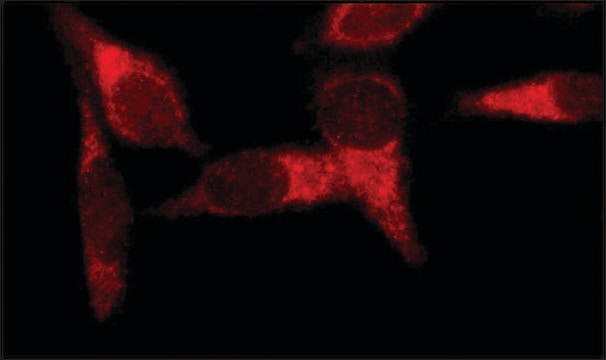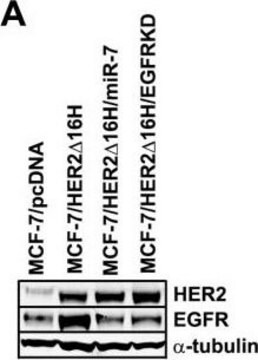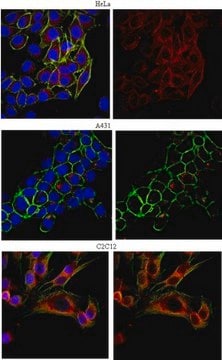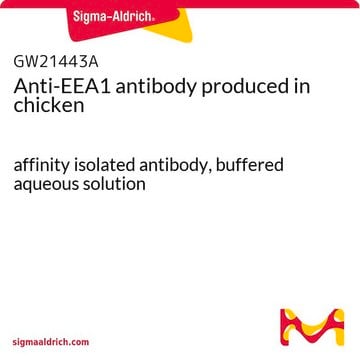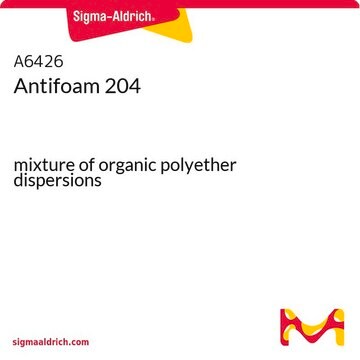This product has not been tested to confirm the light chain. A suitable isotype control for this product is M5409 Mouse IgG2a Isotype Control from murine myeloma, available at https://www.sigmaaldrich.com/product/sigma/m5409.
추천 제품
생물학적 소스
mouse
Quality Level
결합
unconjugated
항체 형태
purified from hybridoma cell culture
항체 생산 유형
primary antibodies
클론
EEA1-N19, monoclonal
양식
buffered aqueous solution
분자량
antigen ~160 kDa
종 반응성
human, mouse, rat
농도
~1.0 mg/mL
기술
immunoprecipitation (IP): suitable
indirect immunofluorescence: suitable
western blot: 1-2 μg/mL using whole extract of rat NRK cells
동형
IgG2a
UniProt 수납 번호
배송 상태
dry ice
저장 온도
−20°C
타겟 번역 후 변형
unmodified
유전자 정보
human ... EEA1(8411)
mouse ... Eea1(216238)
rat ... Eea1(314764)
일반 설명
애플리케이션
- immunoblotting
- immunoprecipitation
- cell fractionation[1]
- indirect immunofluorescence
- immunohistochemistry
- Immunoprecipitation
- Indirect immunofluorescence
- Western blotting at a concentration of 1-2μg/mL using whole extract of rat NRK cells
생화학적/생리학적 작용
물리적 형태
면책조항
적합한 제품을 찾을 수 없으신가요?
당사의 제품 선택기 도구.을(를) 시도해 보세요.
Storage Class Code
12 - Non Combustible Liquids
WGK
nwg
Flash Point (°F)
Not applicable
Flash Point (°C)
Not applicable
가장 최신 버전 중 하나를 선택하세요:
시험 성적서(COA)
이미 열람한 고객
활성 필터
자사의 과학자팀은 생명 과학, 재료 과학, 화학 합성, 크로마토그래피, 분석 및 기타 많은 영역을 포함한 모든 과학 분야에 경험이 있습니다..
고객지원팀으로 연락바랍니다.